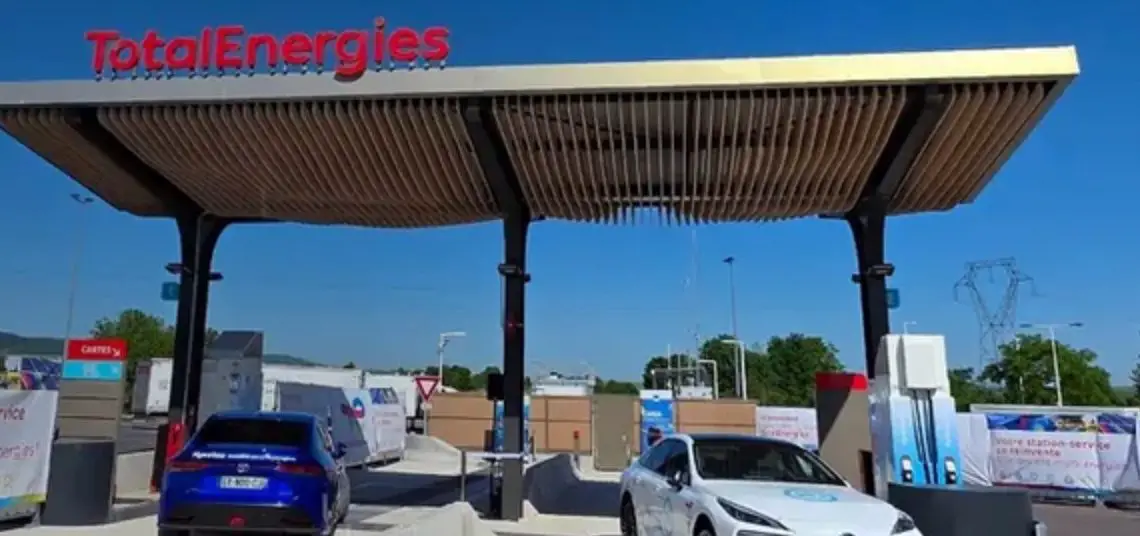
Hydrogen Refueling Network Expansion: TEAL Mobility Unveils Marseille-Fos Station and Reims Renewable Hub
November 20, 2025TEAL Mobility just handed a brand-new hydrogen station at Marseille-Fos plus a fully renewable hub in Reims. Strap in—this freight revolution is barreling down the track!
On November 2025, TEAL Mobility shook up France’s energy scene with twin launches:
- Marseille-Fos Station: sitting in Marseille—a historic port city of 870,000—and primed to pump out one tonne of hydrogen daily at both 350 and 700 bar, serving everything from delivery vans to 40-ton rigs.
- Reims Renewable Hub: in the Champagne capital of Reims (182,000 people), an electrolyzer site powered by wind and solar splits water into zero-carbon H₂, then dispenses it on-site to keep trucks rolling across France, Belgium and Luxembourg.
These aren’t just shiny new stations—they’re pinpointed on the freight corridors linking southern France to Belgium and Luxembourg, cutting detours and ditching diesel fallbacks.
Why It Matters
Heavy haulers account for roughly a quarter of Europe’s transport CO₂, and let’s be honest, fleets won’t dive into hydrogen mobility without reliable fueling. By dropping robust pumps at high-traffic nodes, TEAL Mobility supercharges the region’s hydrogen refueling network and smashes the main barrier to real freight decarbonization.
- Cleaner Air: Swapping diesel for hydrogen slashes tailpipe CO₂ almost to zero.
- Quick Pit Stops: Fifteen-minute fills keep trucks on the move.
- Energy Independence: Rely on locally produced renewable hydrogen, not imported fossil fuels.
With Europe’s ambitious climate goals, locking in stable green fuel prices also shields operators from soaring diesel levies—good for the planet and the bottom line.
Historical Context: From Pilots to Powerhouse
In the early 2010s, hydrogen pumps were novelty testbeds—tiny 50 kg-a-day stations feeding demo vans. Passenger uptake stalled, so industry pivots targeted heavy-duty corridors. Fast-forward to today, and those early bets have paid off: we’ve graduated to commercial-scale reliability.
The Hydrogen Infrastructure Alliance has led the charge, blasting through the old chicken-or-egg dilemma by building enough stations that fleets actually show up—and orders have skyrocketed.
The Magic Ingredient: Tech That Works
Hydrogen Refueling Stations aren’t rocket science, but they’re engineered for durability and volume. Here’s the scoop:
- Supply Chain: H₂ arrives by road tanker or is generated on-site via electrolyzers powered by sun and wind.
- Compression: Gas gets cranked up to 350 or 700 bar, packing max energy for long hauls.
- Dispenser: Automated pumps top off tanks in under 15 minutes, with safety systems monitoring every psi.
At Marseille-Fos, up to a tonne of hydrogen rolls out daily—enough for a small fleet’s full shift. Over in Reims, production ties directly to renewables, guaranteeing every kilogram is certified renewable hydrogen.
Freight Corridors Get a Boost
Picture a truck leaving the Port of Marseille, cruising through Lyon, topping up in Reims—and never touching diesel. That’s today’s new route map:
- Southern Sprint: Marseille → Lyon → Reims
- Cross-Border Circuit: Northern France → Belgium → Luxembourg
With stations spaced just right, range anxiety disappears, markets expand, and logistics teams can finally chart zero-emission journeys with confidence.
Partnerships at the Core
TEAL Mobility didn’t go it alone. This push is powered by the Hydrogen Infrastructure Alliance, a powerhouse coalition—and a prime example of the EU hydrogen alliance in action. Six leading operators—Hydri, Fountain Fuel, H2 MOBILITY, Virya Energy, HYmpulsion and TEAL Mobility—are pooling resources to fast-track station builds.
- 92 stations already up and running across major hubs
- 39 more slated by 2028, enabling over 1,800 truck fill-ups daily
- Unified standards mean no adaptor juggling or pressure hiccups
EU grants, French subsidies and private capital are lining up to cut red tape and drive down capex hurdles.
Collateral Wins & Challenges
Scaling up stations slashes operating costs, nudges truckmakers to boost fuel-cell output, and decarbonizes routes where batteries struggle—think alpine passes or round-the-clock operations. Cross-border coordination also strengthens energy security by tapping renewables across diverse markets.
On the flip side, vehicle rollout needs to keep pace. Renewable power prices can fluctuate, squeezing H₂ economics, and sustained policy backing is crucial to maintain momentum.
Looking Ahead: A Freight-Fueled Future
Here’s the kicker: more stations spark more fleet buys, which drives costs down and fuels a self-reinforcing clean logistics loop. By 2030, visionaries are aiming for a pan-European hydrogen backbone—linking ports, airports and industrial centers under the EU’s TEN-T network, stretching from Marseille up to Rotterdam and Oslo.
The zero-emission freight era isn’t a promise—it’s already rolling out at full throttle!



 With over 15 years of reporting hydrogen news, we are your premier source for the latest updates and insights in hydrogen and renewable energy.
With over 15 years of reporting hydrogen news, we are your premier source for the latest updates and insights in hydrogen and renewable energy.